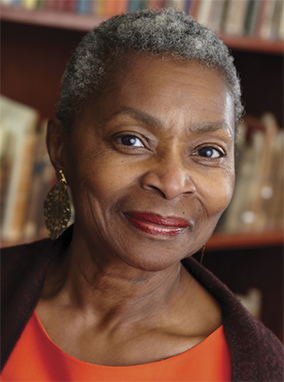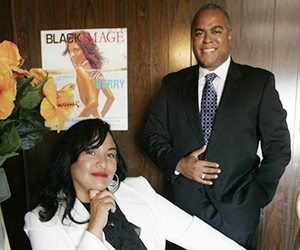HISTORIC BLACK VEGAS | The Biltmore and Rochester
February 21, 2022 by agutting@reviewjournal.com
Filed under Highlights
The Biltmore and Rochester
BY CLAYTEE D. WHITE
Before the Moulin Rouge there was the Nevada Biltmore at the corner of Main and Bonanza. The Moulin Rouge was upscale — it could rival any property on the Strip in its 1955 heyday, and was for all intents and purposes located in the Black community. Known today as the Historic Westside, the community welcomed Blacks in the early 1930s. Prior to that, most residents lived in the downtown core, east of the tracks, but were pushed out by progress as more space was needed for businesses. Whites moved eastward and Blacks, to avoid losing business licenses, moved across the tracks to the West.
Before the Black community geared up to house entertainment venues like the Carver House, the Cove, and the Moulin Rouge, there were smaller gaming locations beginning in 1943 with Smokey Joe’s Club Alabama and a year later the Brown Derby, the Harlem Club, and the Cotton Club. However, in 1942, Bob Brooks built the Nevada Biltmore virtually in the Black neighborhood. It was preceded in 1941 only by the El Rancho Vegas (the start of the Strip) and the El Cortez on Fremont. Brooks was well known for his famous Seven Seas restaurant in Hollywood and like the restaurant, the Nevada Biltmore provided a booming business for Brooks. Unlike the Seven Seas, the success did not last as the entertainment focus shifted toward the Strip as more hotel casinos were added. So, the Biltmore property began to change hands. Horace Heidt, famed bandleader bought the hotel casino and then it was sold to a group of four local well known white men — Lou Weiner (attorney), B. Mahlon Brown (Justice of the Peace), Jimmy Sills (restaurant owner), and Carl Amente, the sole gambler in the bunch.
At about this time, rumors began to fly that the property would be sold to some wealthy Blacks in Southern California, including Rochester of the Jack Benny Show. Ernie “Rochester” Anderson had become a well-known actor, radio personality, and prominent businessman. Stanley Hunter emerged as the Biltmore’s operator and announced that the hotel casino would have an all-Black staff, cater to an all-black clientele, but would not be integrated. The four local whites in ownership withdrew all connections with the facility. The city fathers were outraged. The Mayor, Ernie Gragin, called a special meeting of the city commission. Reed Whipple and other commissioners revoked both liquor and business licenses from the Biltmore. Woodrow Wilson, president of the NAACP, invited the mayor and commissioners to a meeting at Second Baptist Church. The entire group was busy and did not honor the request but invited Wilson to a meeting at City Hall on the following day. Woodrow Wilson showed up with fifty members of the NAACP. They were invited back to a regular city commission meeting and Wilson arrived with 250–300 people.
This saga ended with Blacks enjoying the Nevada Biltmore for a few weeks. They were permitted to bring their own liquor, swim in the pool, and partake of the plush facility’s food and entertainment options. Thus, the decade of the 1940s ended on that sour note but perhaps prepared the community for the advent of the Moulin Rouge in the middle of the 1950s.






